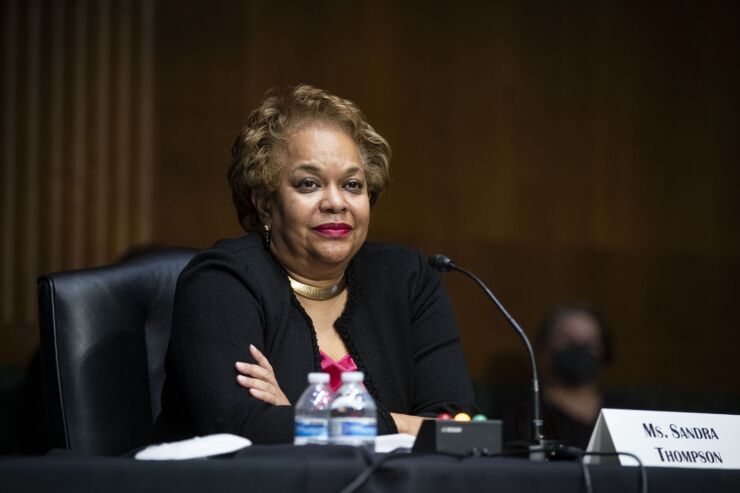Below is an open letter to Sandra L. Thompson, President Biden’s nominee for Director of the Federal Housing Finance Agency.
Dear Ms. Thompson:
Please add our voices to the chorus of those cheering President Biden’s nomination of you as Director of the Federal Housing Finance Agency. Your extensive record of achievement at the FHFA and the Federal Deposit Insurance Corp., indications of senatorial support for your nomination, and the skill with which you handled your confirmation hearing on Jan. 13, leave little doubt that the U.S. Senate will take favorable action on your nomination in the near future.
At your confirmation hearing last month, you took note of the “relatively low earnings” of the 11 banks that constitute the Federal Home Loan Bank System. As we pointed out in a

The system faces at least two strategic challenges. First, it finds itself in the unenviable position of fighting the Federal Reserve as the latter has flooded the banking system with liquidity. Second, the system’s member/owners consist exclusively of depository institutions and insurance companies at a time when the vast majority of mortgages are being originated by nonbanks that are excluded by law from the system.
The system’s secular decline has prompted some to call for consolidation of the 11 regional banks. Others question the very relevance of a system designed to address the challenges of the Great Depression to a modern financial system whose perimeter is being reshaped daily by the forces of competition and financial technology.
It is understandable that in the early days of your tenure as Director of the FHFA you will focus on the future role and structure of the two most prominent government-sponsored enterprises, Fannie Mae and Freddie Mac. We strongly urge, however, that even in the early days you initiate a strategic review of “the other GSE,” the Federal Home Loan Bank system.
This review can begin by asking these two key questions: 1) Currently, and for the foreseeable future, does the Federal Home Loan Bank system serve a useful purpose? and 2) Should the system be repurposed to meet the financial needs of the modern era? The answers to these questions are, in our opinion, respectively and emphatically, “No” and “Yes.”
The Federal Home Loan banks occupy a prominent position in the housing industrial complex, that firmament of lobbyists, lawyers and assorted actors referred to as the “housers” by Joe Nocera and Bethany McLean in their book about the recession of 2008-09, All the Devils Are Here. For almost 90 years, they have provided backup liquidity to the banks, credit unions and insurance companies that are the owners of the 11 banks from New York to San Francisco. Moreover, the system has an admirable though understated role in funding affordable housing.
There are many financial deserts, however, for which the oasis of bank liquidity could provide the same public good as it did to housing in the 1930s. Infrastructure, climate change, small business, economic inequality and serving the unbanked are just a few of the sectors currently outside of the regulatory perimeter of the Federal Home Loan banks. It need not be so.
Unleashing the full potential of the system does not mean opening the spigots of federal dollars for every special interest that comes along. The Federal Home Loan banks are experienced in the use of haircuts, credit enhancements and sound underwriting to ensure that the modernized mission of the system is carried out in a safe and sound manner under the watchful eye of the FHFA. It is this culture of prudent lending that allows the Federal Home Loan banks to boast that not a single dollar has been lost on advances by any of its banks.
To assist you in exploring the possibilities inherent in a reimagined system, we urge that you appoint an advisory committee consistent with the standards of the Federal Advisory Committee Act. From your experience at the FDIC, you realize how effective such committees can be to an agency’s executive management.
Members of the committee would be appointed by you and would represent current system stakeholders consistent with the Act. Crucially important, however, would be the appointment of industry leaders and academics who could contribute their creative talents in exploring the potential stakeholders of a more modern and relevant system…a system in touch with current demands for liquidity.
To inform the work of the advisory committee we also urge that you issue a call-for-papers on the topic of reimagining the system. In this regard, Acting Comptroller of the Currency Michael Hsu’s recent
Of course, we stand ready to assist you in any way we can in this effort.
With every good wish,
Cornelius Hurley and William M. Isaac





